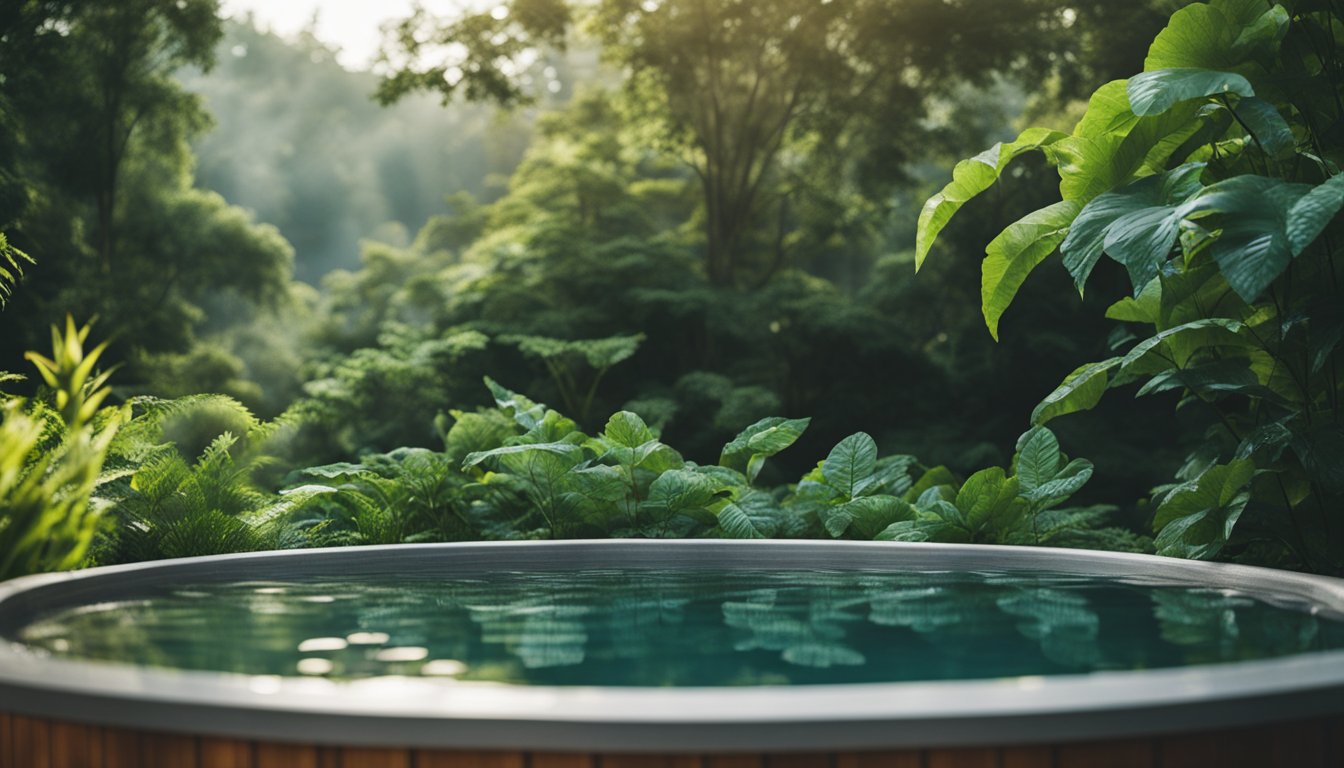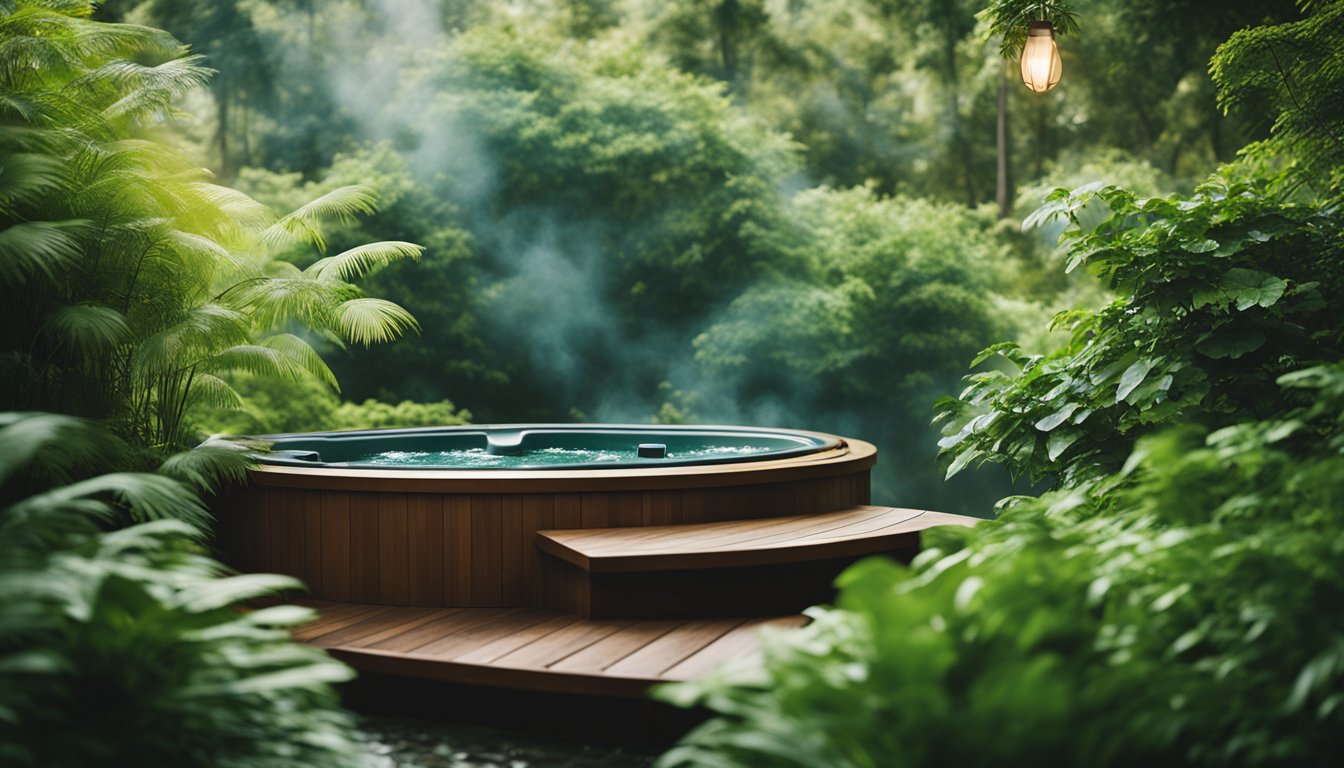Late updated: 19 Sep 2024 10:09
Written by: James Whitaker
Hot Tub Relaxation Techniques for Stress Relief: Expert Tips for Maximum Calm
In today's fast-paced world, finding effective ways to unwind is crucial for maintaining our mental and physical health. Hot tubs offer a sanctuary of warmth and calm, creating the perfect setting to escape daily stresses. By immersing ourselves in hot tub relaxation techniques, we can significantly reduce stress and promote wellness.

Stress relief begins with the simple act of soaking in warm water. The soothing effect of hydrotherapy not only helps in physical relaxation but also calms the mind. Combined with targeted relaxation techniques, such as deep breathing or visualisation, hot tub therapy becomes a comprehensive approach to enhancing our overall wellness.
Incorporating these relaxation practices into our routine can transform a simple hot tub experience into a powerful remedy for stress. With consistent practice, it becomes an integral part of achieving a balanced and healthier lifestyle. As we explore various techniques throughout this blog post, we invite you to join us on this journey towards relaxation and rejuvenation.
Key Takeaways
- Hot tubs can effectively reduce stress and improve wellness.
- Enhancing your hot tub experience with relaxation techniques is beneficial.
- Understanding hot tub therapy is essential for health benefits.
Understanding Hot Tub Therapy

Hot tub therapy combines warm water immersion, buoyancy, and hydrostatic pressure to promote both mental and physical well-being. By enhancing circulation and encouraging the release of endorphins, this form of therapy offers significant benefits.
The Science of Hydrotherapy
Hydrotherapy utilises the properties of water to improve physical symptoms and boost mental health. The buoyancy provided by water reduces the effects of gravity, diminishing pressure on joints, which is beneficial for conditions like arthritis and muscle tension. Warm water immersion raises body temperature, increasing blood circulation and helping to improve the immune system. Hydrostatic pressure further aids in circulation and can contribute to pain relief.
Another crucial aspect is the release of endorphins, the body's natural pain relievers, which are enhanced during hot tub use. Endorphins not only help in reducing stress and chronic pain but also improve mental performance. Consistent hydrotherapy sessions support the body in managing stress levels, which can greatly improve quality of life and promote relaxation techniques that are essential for coping with chronic stress.
Benefits for Mental and Physical Health
Hot tub therapy is known for reducing anxiety and enhancing mental well-being. The combination of warm water and buoyancy helps create a calming environment, ideal for stress relief. Regular sessions can mitigate symptoms of anxiety and chronic stress by providing a meditative space conducive to relaxation.
Physically, hot tubs promote muscle relaxation, aiding in pain relief, especially for people facing ailments associated with aging. Increased circulation facilitates better oxygen supply to tissues, which can improve sleep quality and overall physical recovery. By incorporating hydrotherapy into our routines, we make strides towards improving both our mental and physical health, fostering a balanced approach to well-being.
Enhancing Your Hot Tub Experience
To elevate our hot tub experience, we can incorporate a mixture of practices that not only enhance relaxation but also contribute to our well-being. Engaging in activities like aromatherapy, gentle stretching, and mindful meditation can transform an ordinary soak into a rejuvenating ritual.
Aromatherapy and Essential Oils
Aromatherapy can significantly uplift our hot tub experience. By adding essential oils such as lavender, eucalyptus, or chamomile, we create a tranquil atmosphere that encourages deep relaxation. These scents can help alleviate headaches, reduce stress, and promote an enhanced mood. To avoid damage to the tub, we should use specifically formulated products that are safe for water immersion.
Incorporating aromatherapy into our routine also assists in creating a soothing routine. The benefits extend to our overall feeling of comfort and peace. With consistent use, we may notice improvements in muscle relaxation and a reduction in inflammation. Thus, this simple addition can make our self-care time more restful and effective.
Stretching and Aquatic Exercise
Utilising gentle stretching and light aquatic exercises in our hot tub can improve flexibility and reduce muscle aches. The warm water combined with massage jets can serve as excellent support for physical therapy and managing joint pain. These activities can foster muscle compression, supporting the gate control theory by potentially reducing perceived pain through non-painful input.
It's beneficial to perform exercises such as gentle arm circles and leg stretches. These movements not only contribute to overall fitness but can also help in managing inflammation and aiding recovery from the day's stresses. Integrating these activities into our routine can empower us to gain more from our hot tub sessions.
Relaxation and Meditation Techniques
Practising relaxation techniques, including meditation and deep breathing, while in the hot tub allows us to unwind and rejuvenate both body and mind. By focusing on slow, measured breaths, we can alleviate stress and foster a state of tranquility. The combination of warm water immersion and mental relaxation supports effective stress relief.
Creating a restful environment by minimising distractions and focusing on tranquility can enhance the meditative experience. This approach can also aid in reducing tension, potentially leading to improved well-being. Consistent practice may encourage a more resilient state that supports both mental and physical health. Through integrating these practices, we can optimise our relaxation techniques for a more rewarding hot tub experience.
Frequently Asked Questions

In this section, we'll provide insights into enhancing relaxation techniques during hot tub sessions tailored for stress relief. We cover best practices, session durations, and effective temperatures for maximising benefits.
What are the optimal practices for enhancing relaxation while using a hot tub?
To enhance relaxation, maintain a tranquil environment. Adjust lighting to soft tones, perhaps using candles. Consider ambient music to soothe the mind. Staying hydrated is vital. It's beneficial to have a glass of water nearby to prevent dehydration during longer sessions.
Can aromatherapy be incorporated into hot tub sessions for better stress management?
Indeed, aromatherapy can complement a hot tub session. Essential oils like lavender or eucalyptus can be added through special diffusers or oil-infused bathing salts. However, ensure the products used are safe for hot tub use to avoid damage or skin irritation.
What are the recommended durations for a hot tub session aimed at stress relief?
It's best to limit sessions to 15-30 minutes. This duration balances relaxation benefits with safety, as prolonged exposure can lead to overheating or dehydration. Tailor the length to personal comfort levels and health considerations.
How can hydrotherapy in a hot tub contribute to reducing anxiety?
Hydrotherapy uses warm water to relax muscles and calm the nervous system. This can lower heart rate and alleviate tension, promoting a sense of peace. The buoyancy of the water supports joints and reduces strain, aiding mental relaxation.
What temperature settings are considered most effective for stress relief in a hot tub?
Ideal temperatures for stress relief are typically between 37°C and 39°C (98°F and 102°F). This range offers comfort without causing overheating. Users should adjust based on personal preference and health constraints.
Which types of muscle relaxation exercises can be performed in a hot tub?
Gentle stretching is suitable in a hot tub. Focus on shoulder rolls, neck stretches, and leg extensions. These movements enhance muscle relaxation and flexibility. Engage in exercises that are comfortable and avoid overexerting in the warm water.
